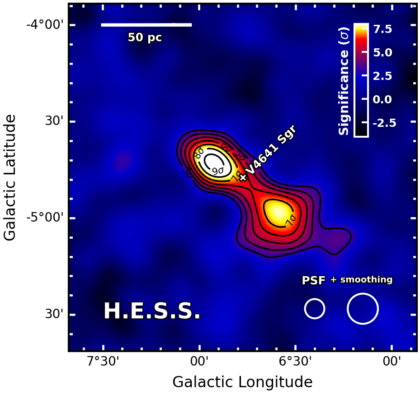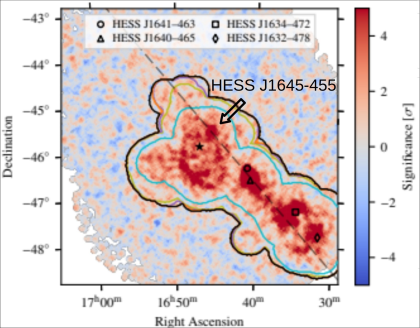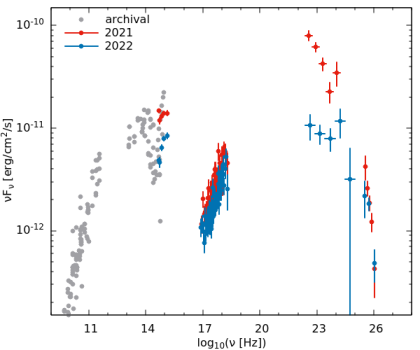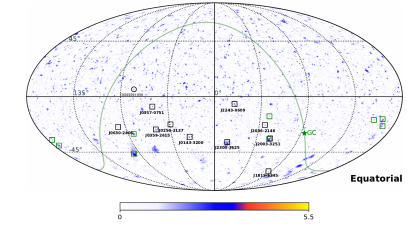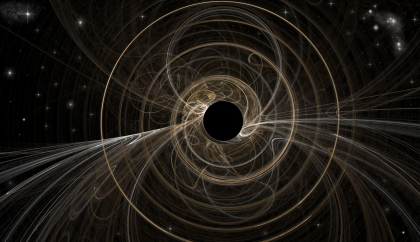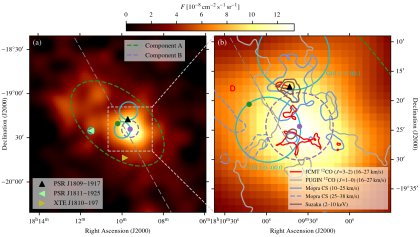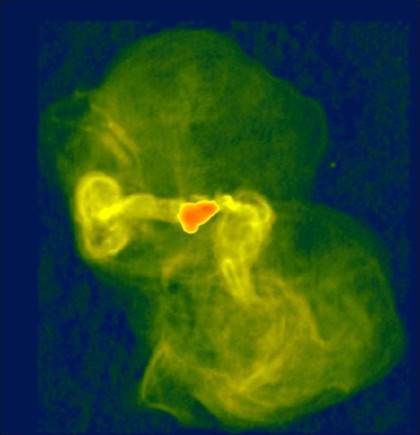V4641 Sagittarii – the not-so-unremarkable microquasar
December 2025 For decades, we have sought to understand the origin of the most energetic particles in the Universe: cosmic rays. The energy range of cosmic rays arriving to Earth span more than ten…
The Vela Pulsar – the most Highly Energetic Clock
November 2023 Pulsars, progeny of supernova explosions, are among the most fascinating beasts in the cosmic zoo. They are rapidly rotating objects exhibiting magnetic field intensities many orders of magnitude larger than what we…
HESS J1645−455 – A gem on the ring?
October 2023 The brightest source of gamma-ray emission in any energy band is the Milky Way. It dominates the all-sky maps obtained with scanning or hemispheric detectors operating in space (e.g. the Fermi-LAT) or…
The identity crisis of the blazar PKS 1510-089
August 2023 Blazars are the most abundant sources in the VHE sky and attract a lot of attention by changing their brightness on all time scales that have been probed so far. Variability implies…
Cosmic Conspiracy Theories: Neutrinos and Gamma Rays from PKS 0735+178?
July 2023 Very-high-energy (VHE) gamma-rays studied with the H.E.S.S. telescopes are emitted by charged particles (mostly electrons and protons) that have been accelerated to very high energies. This ties gamma-rays to these highly relativistic…
Flares in the atmosphere
June 2023 The H.E.S.S. telescope array is used to study cosmic source that radiate very-high-energy (VHE) gamma rays, electromagnetic radiation whose photons are 1.000.000.000.000 times more energetic than the visible light that we see…
Primordial Black Holes
May 2023 By definition, Black Holes (BHs) are difficult to detect. However, many studies have now conclusively demonstrated that BHs exist – both in the mass range of a few to tens of solar…
On HESS Follow-up observations of the Brightest Gamma-ray Burst Of All Time a.k.a. the BOAT
April 2023 It was a mind-boggling explosion that happened 3 billions years ago in a distant galaxy. The extremely energetic flash emitted with the explosion traveled at the speed of light and hit Earth…
Tracking down the mysterious gamma-ray source HESS J1809–193
March 2023 HESS J1809–193 is a gamma-ray source known since many years: it was first detected as part of the H.E.S.S. Galactic Plane Scan, and its discovery was published in 2007 [1]. Initially, it has been…
Chasing gamma rays in Virgo A
February 2023 All known astronomical sources of gamma-rays are also sources of radio emission. The relativistic particles that are capable of emitting the very energetic gamma radiation detected with HESS will inevitably emit synchrotron…

